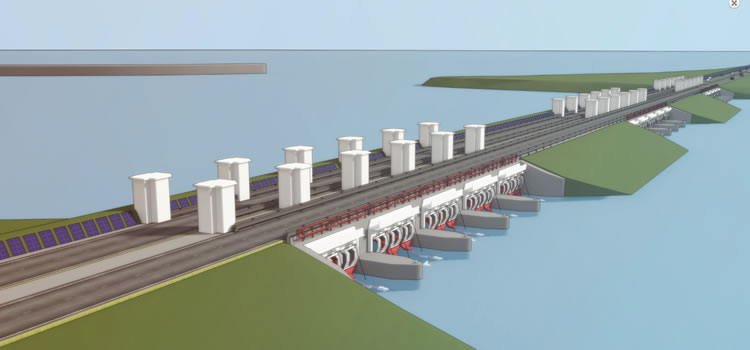An energy dike is a water barrier that guarantees water management and water safety and also combines this with sustainable energy production. Electricity can be generated on the dividing line between fresh and salt water using SGP (salinity gradient power). But energy can also be produced from the flow of the water. These sustainable techniques, known as tidal and blue energy, can also be applied to energy dikes in other delta areas around the world.
The Energising Deltas project builds on the Netherlands' international status as an exporter of technology and knowledge in the field of water safety and water management. Innovative and sustainable dikes and flood defences reinforce this strong Dutch market position. Energy dike projects are being developed at various locations in the provinces of Zeeland, Noord-Holland, Zuid-Holland and Friesland. But the technical, ecological and organisational knowledge required for successful implementation needs to be improved. The Energy Dikes project wants to strengthen, bundle and disseminate that knowledge in order to utilise existing opportunities for concretely marketing the energy dikes concept. The project runs from February 2013 to June 2015.
The project partners are Tocardo, REDstack and Strukton (defining research questions and assessing results), Erasmus University Rotterdam, Deltares and ECN (conducting research and development based on the research questions), Energy Valley (shaping structural cooperation between stakeholders) and Tidal Testing Centre (overall coordination and project management).
The Afsluitdijk occupies a unique position as a watershed between fresh and salt water. Two companies are currently actually working on these sustainable techniques here: REDstack developing blue energy in Breezanddijk on the Frisian section and Tocardo harvesting tidal energy on the North Holland side.
